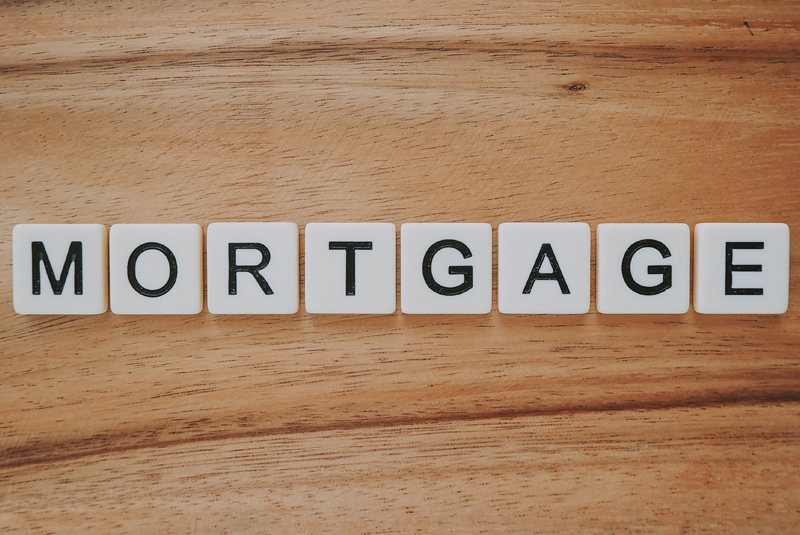July 22, 2022
The Mortgage Stress Test for Home Buyers in Canada
Share this article:

The mortgage stress test is a process you need to be prepared for if you are in the market for a home purchase in this country. It is important that you are prepared for it, particularly if you already know that your mortgage loan will likely be “high-ratio” – i.e. one with a relatively low down payment.
When the stress test was first introduced in 2018, it applied only to high-ratio mortgage loans. Currently – as of June, 2021 to be precise – the mortgage stress test applies to all mortgage applicants. Let’s go into some more of what you need to know about the mortgage stress test and qualifying for a mortgage loan in Canada.

The Mortgage Stress Test – What is it?
The Canadian mortgage stress test is basically a set of rules major lenders such as banks are obligated to use, in order to determine an applicant’s eligibility for a mortgage loan, and how much they qualify for. It’s a regulated way for them to judge your loan-worthiness, based on your personal finances.
History of the Mortgage Stress Test
The latest iteration of the Canadian mortgage stress test came into effect in June 2021. Its history, however, reaches back to 2016. That’s when the government, based on the market conditions of the time, decided to bring in the test for mortgage seekers with a down payment of less than 20%. These higher-ratio mortgage loans are known as insured mortgages, because the applicant is required to obtain mortgage default insurance to secure them. The stress test came about because generally high household debt levels – something which has not subsided to this day – as a way to limit the risk of mortgage default. The main concern was future upward moves in lending rates which translate to higher monthly mortgage payments. The benefit was twofold:
- Lending institutions could anticipate a lower rate of mortgage default
- Borrowers had a measurement of what they could realistically afford in a mortgage
The stress test requirement was extended in 2018, to include uninsured mortgages – those with a down payment of greater than 20%. The qualifying rate has also changed over time – something we will get into next – how the mortgage stress test works.

How the Mortgage Stress Test Works in Canada
The simplest explanation for how the mortgage stress test works is that it runs your mortgage payment calculation at a higher rate than you would typically get from your bank or lending institution. The presumption is that if you can afford a mortgage at a higher rate, then you should have little trouble making all your payments at a lower rate. The figure used for the calculation is known as the Office of the Superintendent of Financial Institutions (OSFI) qualifying rate. As of the 1st of June, 2021, the rate stands at 5.25% – up to that point it had been set at 4.79%.
The OSFI qualifying rate is determined by an averaging out of 5-year fixed rate mortgage loans from the nation’s Big Banks.
When you go to apply for your mortgage, the bank will apply the stress test to two rates – the current one you are negotiating or applying for, and the OSFI rate. Your income and debt levels, and your down payment amount, are all thrown into the calculation. As a rough example:
Supposing you were looking at a 2.5% mortgage rate – the calculation of your mortgage suitability would be based on that rate to determine your eventual monthly payment. The stress test at the OSFI qualifying rate, however, – currently at the aforementioned 5.25% – would determine how much the bank is actually willing to lend you.
The crux of the argument is that over time, lending rates may change for the higher, and that’s why your lender conducts the stress test – to ensure your ability to pay down the road, even at a higher interest rate. We are seeing in real time these days the potential volatility of rates, as inflation has struck over the last few months. As prices go up, the central bank may raise interest rates as a countermeasure. This in turn induces banks to raise their lending rates.

How to Conduct Your Own Mortgage Stress Test
Before ever setting foot in a bank or other lending institution, you can and should conduct your own mortgage stress test, to see where you might land, in terms of a mortgage amount and monthly payment.
The simplest way to determine how a lender may view your application is to do some calculations on your own. You already have access to some important information, namely:
- What dollars you can afford to use as a down payment on a home
- The price range of homes you are considering
- The advertised rates at your local bank or lending institution
These are three crucial variables which go a long way to revealing what a monthly payment will look like. Taking a look at them individually:
Down payment – this is the money you’ve worked hard for and saved up as part of your quest for home ownership. These days, with the price of housing, it will likely have to be a fairly hefty amount, by the average person’s standard. For an $800,000 home purchase, for instance, a 25% down payment equals $200,000. This likely translates to several years of hard saving, unless you have somehow come into money by some other means, such as an inheritance, lottery win, or struck it rich by luck.
The price of your home – we’ve all seen the trend over many years now. There is a seemingly relentless charge upward of home prices across the country; in some red hot markets, such as our own Greater Toronto Area, the increases have been truly staggering with an average price around here of over $1.2 million (April 2022). Only very lately has there been some sign of a leveling off, with the spectre of increasing interest rates – which is the variable we want to highlight next…
Mortgage lending rates – this variable is crucial. The cost of borrowing is a long-term cost, and importantly, it is subject to change over time. This is a marked difference from the first two factors, which are pretty much fixed, and a one-time figure – home price and the amount of your down payment. Your mortgage interest rate is more of a wild card, subject to the whims of the economy and the Bank of Canada. Over the last several years, lending rates have been very stable and low. This has been great for prospective home buyers – even with real estate markets surging, they could count on attractive rates, and keep saving until such time as they could reasonably make the plunge and buy a home. As we’ve mentioned, this may be changing over the next while.

Plug in the Numbers for Your Mortgage Stress Test
To conduct your own personal stress test, you manipulate these three variables, to see both what you might be able to afford, and what a bank or lending institution may be willing to offer in terms of mortgage. The primary driver for what you can ultimately afford is your down payment. The amount you put down on a house pretty much determines the price point you fit into. Considering a typical 20% threshold, the amount of money you have on hand for your down payment should probably meet this mark. For example, if you have saved up $50,000 for your down payment, that equates to 20% of $250,000. In the Toronto Market, it means that a home purchase is likely out of reach – considering the previously mentioned average price of well over $1,000,000. Bump that down payment number to over $100,000 you may be on your way – as that figure represents 20% of $500,000, the very lowest possible entry point in the Toronto real estate market.
Again, a deciding figure, once you’ve plugged in the numbers for your down payment and the home price, will be the interest rate you will be charged. Here’s a rough estimate for the $400,000 mortgage example:
- $500,000 home price
- $100,000 down payment
- Interest rate 5.14% fixed rate
- Monthly payment = approximately $2,400
Change the interest rate to 3.3%, and the monthly payment is reduced to approximately $2,000 per month – a significant reduction.

Concluding Thoughts – the Mortgage Stress Test
Keep in mind that the mortgage stress test is not the only thing you’ll be evaluated on when applying for a home mortgage loan. Among the most important factors they will take into account when reviewing your application:
- Your current debt load – what you owe in other areas, such as car payments, student loans, credit cards, etc.
- Your credit score – which is another formal assessment of what you are deemed worthy of in terms of taking on a loan the size of a home mortgage
Your total income, of course, also figures heavily into the assessment. Stable employment, and a suitable amount of monthly income, will weigh heavily in the decision on how much a lending institution is willing to issue on a mortgage loan. All of these factors, and others, are calculated into your gross debt service ratio (GDS), as well as your total debt service ratio (TDS). It’s a fairly involved and detailed process.
Coupled with these other analyses, the mortgage stress test will play a significant role in ultimately determining the limit of what a bank or other lending institution will be willing to lend you for your home mortgage. There are many variables; a couple of them are well beyond your control – the real estate market/home prices, and interest rates. The one variable in your control is the cash you have on hand; in other words, what you can accumulate for your down payment. A good bit of closing advice may be: work hard and save hard, and accumulate as much as you can for your down payment. Not only will this reduce the amount you pay monthly on your mortgage, it will also show your prospective lender that you are serious about being a homeowner.
For more expert advice on mortgage stress test, consider contacting a mortgage advisor today.
Get more homeowner tips
Subscribe to get more homeowner tips and advice delivered right to your inbox.
More Great Reads
- Opportunities for first-time homebuyers among self-employed Canadians
- Risks tied to rising delinquencies & tighter credit environment
- Mortgage refinancing and switching lenders at renewal — advantages for self-employed borrowers
- Alternative income verification & “self-declared income” mortgages
- Impact of rate resets and mortgage renewals (the “renewal wave”)


